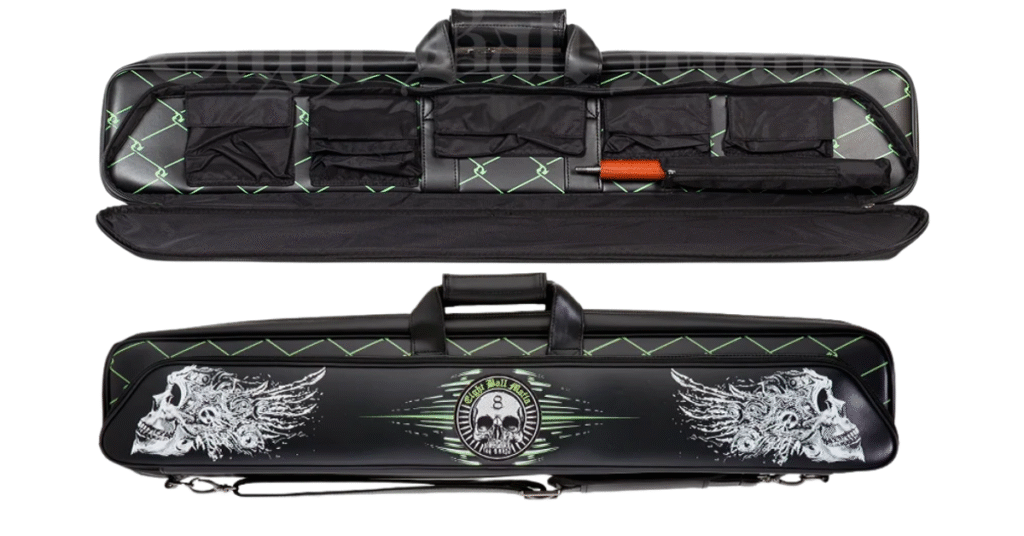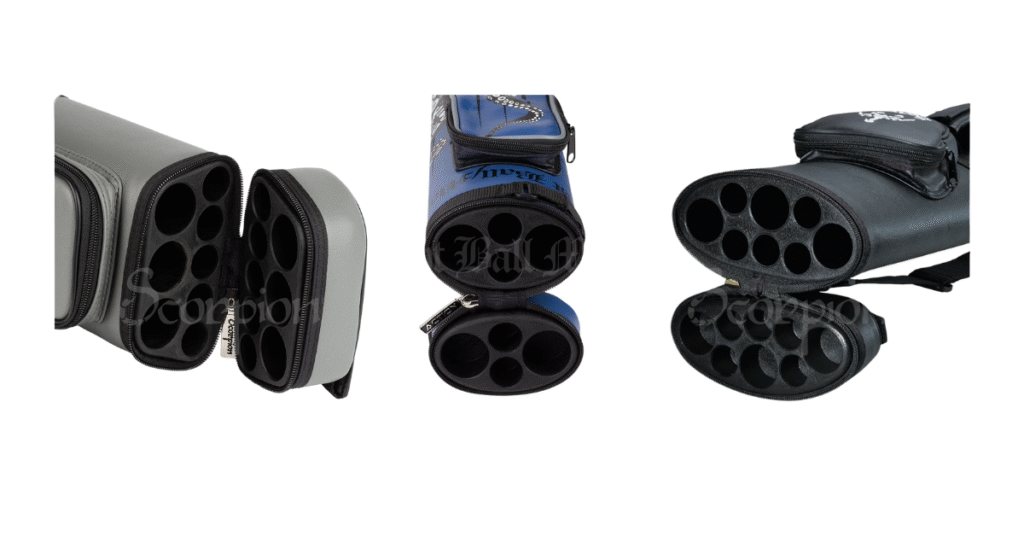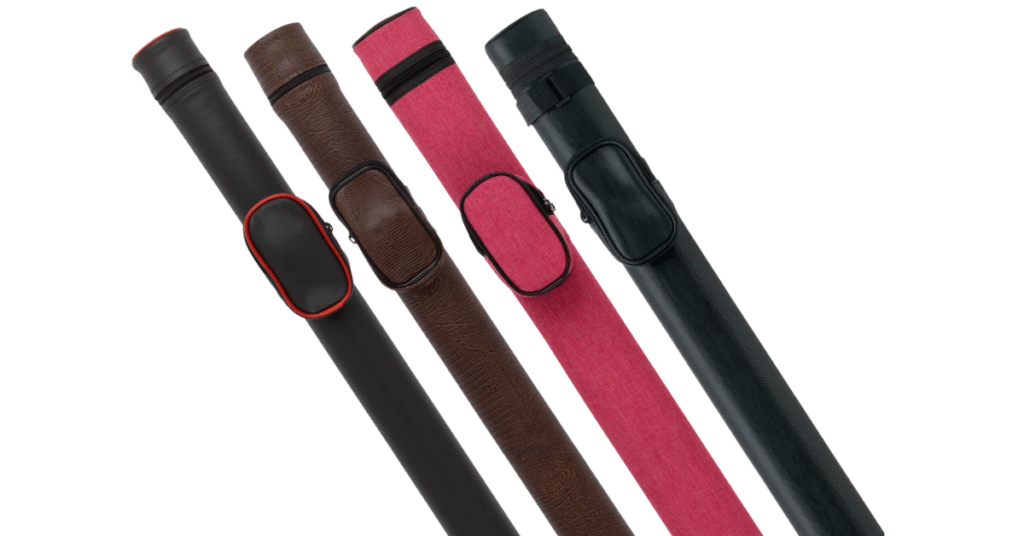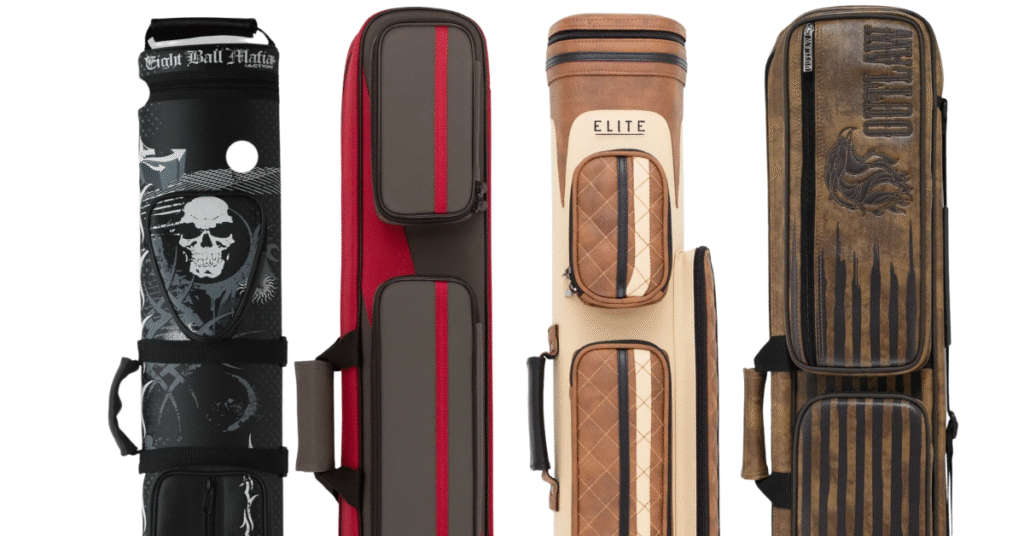When you spend money on a pool cue, protecting it is just as important as how you play with it. A cue that bends, chips, or absorbs moisture loses its edge fast. That is why choosing the right case matters. But there is one question every player faces at some point: should you go for a hard case or a soft case?
At first glance, it seems simple. Hard cases look tougher. Soft cases look lighter. Yet the right choice is not just about which one protects better. It is also about what gives you the best value for the money and fits your daily routine.
This guide breaks down both options from a practical point of view. You will see what each type offers in terms of protection, comfort, price, and long-term value.
Understanding the Two Types
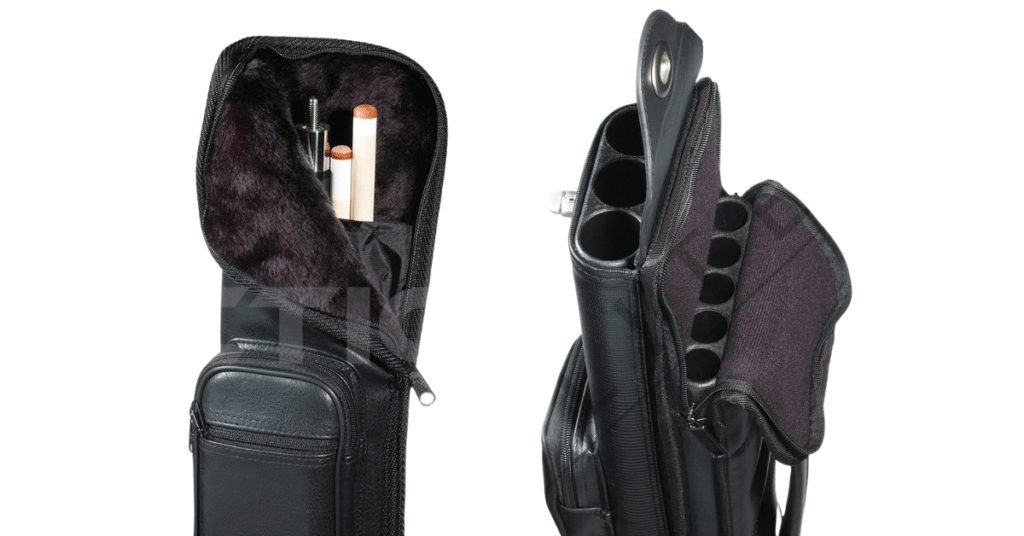
Let us start with the basics.
A hard cue case has a rigid outer shell, usually made from molded plastic, leather-covered wood, or high-impact composite. Inside, there are foam or felt-lined tubes that hold your cue parts in place. Everything stays separated and locked in position. The idea is to keep your cue safe even if the case gets dropped or bumped around.
A soft cue case, on the other hand, has a flexible body made from leather, canvas, or nylon. It uses padding rather than rigid tubes to keep the cue safe. Most soft cases have a zippered design and shoulder straps, making them easy to carry and convenient for short trips.
Both cases do the same basic job, but how they do it is very different.
Protection Comes First

Let us talk about what matters most: protection.
A hard case provides the best defense against impact. Its solid shell absorbs shocks before they reach the cue inside. If you travel often, play in different venues, or store your cue in a car, a hard case is the smart choice. The structure keeps the cue straight, shields it from temperature changes, and prevents warping.
With a hard case, you can drop it accidentally, bump into doors, or toss it in the trunk without much worry. The cue stays in place and comes out exactly as it went in. That level of security is what you pay for.
A soft case offers basic protection but not the same peace of mind. It works well for casual play when you handle your gear carefully. The padding prevents scratches and light bumps, but if the case takes a hard hit, the cue inside can still suffer.
If your cue is expensive or custom-made, it is worth investing in a hard case. The extra protection pays off every time you travel or store it in less-than-ideal conditions.
The Power of Convenience

Protection is important, but so is convenience.
This is where the soft case shines. It is lighter, more flexible, and easier to carry around. You can sling it over your shoulder, hop on a motorbike, or walk across town without feeling weighed down.
Soft cases also tend to have more external pockets. You can store chalk, gloves, tip tools, and even a towel without adding bulk. That makes them great for casual players who like to keep things simple and move fast.
A hard case, in contrast, is heavier. The solid shell adds weight, and its rigid shape can feel awkward when you are walking or navigating crowded places. It offers unbeatable protection but sacrifices a bit of comfort.
So when it comes to convenience, the soft case wins. The tradeoff is clear: you get more comfort but slightly less protection.
Looking at the Money

No one likes wasting money, especially on gear that should last for years. The key is to match what you pay with what you actually need.
A hard case usually costs more. The materials, construction, and design push the price higher. But you get what you pay for. It lasts longer, protects better, and keeps its shape even after years of use. Think of it as a long-term investment.
A soft case is cheaper and works well if you play only once or twice a week. It gives decent protection at a lower cost. The downside is durability. After frequent use, the straps or zippers might wear out, and the padding can lose its firmness.
When you look at it over time, a quality hard case might save money in the long run because you do not have to replace it as often. But if you are on a tight budget or play casually, a soft case delivers solid value for less cash.
The trick is to be honest about your habits. If you carry your cue every day, spend the extra money for the hard case. If your cue stays home most of the time, the soft case is more practical.
Matching Case to Playing Style

Think about how you use your cue. That alone can help you decide.
If you play tournaments, practice daily, or travel frequently, a hard case makes sense. It is built for movement and protection. You will not worry about bumps, weather, or storage.
If you play for fun at a local club or bar, a soft case makes your life easier. It is quick to pack, easy to carry, and keeps your cue safe enough for light use.
Your playing routine dictates your needs. The case should fit your lifestyle, not the other way around.
Comfort, Weight, and Feel
Beyond money and protection, there is a smaller detail that makes a big difference: how the case feels in your hand.
A hard case gives a sense of confidence. The structure feels firm and reliable. But if you walk a lot, the extra weight can become noticeable.
A soft case feels light and flexible. It molds to your body, which makes it easier to carry over long distances. The downside is that it does not stand upright on the floor as easily, and it may feel less sturdy.
The best way to know which one fits you is to try them both. Pick them up. Walk a few steps. Imagine how you would move through your usual route to the pool hall. The case that feels natural is usually the right one.
Long-Term Value

Durability matters more than most people think. A cue case is not something you replace often. It travels with you, takes hits, and faces the weather.
A good hard case can last a decade or more. The hinges, locks, and shell resist wear. Even the interior stays intact because the parts are fixed and structured. That durability gives it high long-term value, especially for serious players.
A soft case usually lasts a few years, depending on how often you use it. The materials are thinner, and the stitching can loosen with time. But for casual players, that is acceptable. It does its job while staying affordable.
If you think of your cue case as an investment, the hard case wins. If you see it as a simple accessory, the soft case does the job just fine.
The Balance Between Price and Convenience
Now let us put everything together.
If you value protection more than comfort, spend a bit extra and buy a hard case. It will protect your cue better, last longer, and save you money in repairs or replacements later.
If convenience and lightness matter more, and your cue is not overly expensive, a soft case is enough. You get freedom of movement, easier storage, and still a good level of safety for the price.
But what if you want the best of both worlds? That is where hybrid cases come in. They combine a semi-rigid shell with the light design of a soft case. You get extra protection without the full weight of a hard case. They tend to cost slightly more than soft cases, but they hit the sweet spot between value and usability.
For most players, this is the modern answer.
A Decision That Makes Sense for Everyone
In the end, choosing between a hard or soft pool cue case is not about which one looks cooler or which one the pros use. It is about how much protection you truly need and how much you are willing to pay for comfort.
If you carry your cue around often, invest in a quality hard case. It costs more, but it gives your cue a safe home no matter where you go. That peace of mind is worth every cent.
If your game is more casual and your cue stays close to home, save your money and choose a soft case. You get all the practicality you need without spending more than necessary.
For most players who want balance, a hybrid case is the smart middle ground. It protects well, feels light, and justifies the price perfectly.
Whichever you choose, make sure it matches how you actually play. That is the real measure of a good buy. A pool cue case is not only about looks or brand. It is about value, comfort, and confidence.
Protect your cue, protect your game, and let your choice make sense both on the table and in your wallet.

